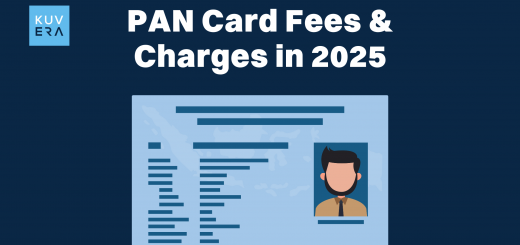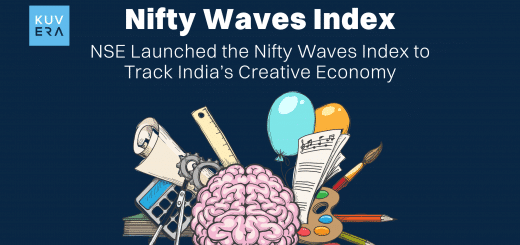In today’s dynamic and volatile global economy, comprehending financial news is essential for effective personal financial planning and management.
Over the past few years, the world has experienced recessions, international conflicts, and economic slowdowns, making it crucial to grasp key financial concepts to navigate these challenging times.
By gaining a deep understanding of financial terms, you can unlock insights into the global economy and its impact on your personal financial situation.
In this blog, we aim to simplify and elucidate 10 vital financial terms that have been making headlines in June 2023. Our goal is to equip you with the knowledge needed to confidently engage in financial discussions and make well-informed decisions.
Understanding these essential financial terms empowers you to:
- Decode Complex News: Simplifying intricate financial news becomes effortless when armed with the knowledge of key terms and concepts.
- Grasp Global Economic Impact: By comprehending financial terms, you can better understand the implications of global economic trends and events on your personal finances.
- Make Informed Decisions: Armed with a strong foundation in financial terms, you gain the confidence to make sound decisions that align with your financial goals.
Join us as we delve into these 9 critical financial terms, demystifying their complexities and shedding light on their significance.
By the end of this blog, you’ll have a solid grasp of these terms, enabling you to engage effectively with financial news and updates.
1. Debt Default
For a brief moment, the global economy became worried that the USA would default on its debt for the first time in history.
At its simplest, a default occurs when a person or entity is unable to repay a debt on time. For example, if someone can’t make a mortgage or car loan payment.
When a country experiences this, it’s called a sovereign default. In such cases, the country cannot fulfill its debt obligations, usually in the form of bonds.
If the US were to default, it means they would stop paying the money owed to US Treasury bondholders.
To provide some context, the US government spends more money than it receives in taxes. To cover the gap, they borrow money by selling US Treasury bonds to investors. These investors, including the Chinese government and pension funds, view these bonds as a secure investment.
So, how was this resolved?
To understand that we must first understand the debt ceiling.
The debt ceiling is the maximum amount of debt that a government is allowed to borrow legally. It sets a limit on government borrowing to control spending. When the debt approaches this limit, the government needs approval to raise it. Failure to raise the debt ceiling can lead to financial obligations not being met.
In order to avoid defaulting on its debt, the country passed a deal to raise the government’s borrowing limit and prevent a potentially catastrophic default on US debt repayments. America’s borrowing limit of $31.4tn was increased for two years until after the next presidential election in late 2024. Additionally, the deal will set limits on government spending during this period.
2. Generative AI
While the word itself is not related to the economy and finance, the term has been all over the news in the past few months.
Generative AI refers to a branch of artificial intelligence that involves creating models capable of generating new content, such as images, music, text, or even videos. Unlike traditional AI systems that rely on explicit programming and rules, generative AI utilizes machine learning techniques to learn patterns from existing data and generate novel outputs.
Nvidia briefly became the latest addition to the trillion-dollar club and the first AI and gaming company to do so. The recent success of ChatGPT and other generative AI platforms has also caught the attention of investors worldwide.
According to Goldman Sachs, Generative AI could raise global GDP by $7 trillion (nearly 7%) and boost productivity growth by 1.5 percentage points.
Generative AI has also been in the news for multiple frauds, ethical and regulatory considerations, and many other related topics.
3. FAANG
Another term that was in the news after Nvidia’s valuation touched $1 trillion was FAANG or FAANG stocks. This is not a new term and it has been in the news for some time.
FAANG is an acronym that represents the five prominent and high-performing technology companies in the United States stock market.
The term was coined by Jim Cramer, a financial analyst, and it stands for:
- Facebook (now Meta Platforms Inc.): A social media and technology company that provides various online platforms and services, including Facebook, Instagram, WhatsApp, and Oculus.
- Apple Inc.: A multinational technology company is known for its consumer electronics, software, and online services. Apple is recognised for its iPhone, iPad, Mac computers, Apple Watch, and various software applications.
- Amazon.com Inc.: A multinational conglomerate focusing on e-commerce, cloud computing, digital streaming, and artificial intelligence. Amazon is one of the largest online retailers and provides services like Amazon Prime, Amazon Web Services (AWS), and Amazon Studios.
- Netflix Inc.: A leading global provider of streaming entertainment services. Netflix offers a wide range of movies, TV shows, documentaries, and original content through its online platform.
- Google (now Alphabet Inc.): A multinational conglomerate that specializes in Internet-related services and products. Google is known for its search engine, advertising technologies, online productivity tools (Google Docs, Sheets, etc.), and Android operating system.
These companies are considered giants in the tech industry, known for their innovation, market capitalisation, and significant influence on various aspects of modern life.
The term FAANG is often used to refer to these companies collectively, highlighting their prominence and impact in the technology sector and financial markets.
4. FPI (Foreign Portfolio Investment)
Recently, SEBI proposed stricter disclosure rules for Foreign Portfolio Investors (FPIs) to safeguard investment integrity and ensure compliance with public shareholding norms.
What is FPI you ask?
In simple terms, FPI (Foreign Portfolio Investor) refers to an individual or an entity from another country that invests its money in financial assets, such as stocks, bonds, or mutual funds, in a different country.
These investors seek opportunities to earn returns and diversify their investment portfolios by putting their money into foreign markets. FPIs play a crucial role in global finance as they contribute to capital flows, market liquidity, and overall economic growth in the countries where they invest.
5. DPI or Digital Public Infrastructure
Recently, the Shanghai Cooperation Organisation or SCO unanimously accepted India’s proposal on DPI or Digital Public Infrastructure.
In a remarkable development, the member countries of the Shanghai Cooperation Organisation (SCO) have unanimously embraced India’s proposal for the development of Digital Public Infrastructure (DPI). Ashwini Vaishnaw, the Union Minister for Electronics & Information Technology, shared the news, highlighting India’s ongoing efforts to expand digital access and introduce transformative technologies.
India’s success in initiatives such as Aadhaar, Unified Payments Interface, DigiLocker, and CoWin has played a pivotal role in this progress.
What is DPI?
DPI refers to a framework or system developed by a country or organisation to provide digital services and technologies to its citizens or users. It involves the creation of digital platforms, tools, and services that enable access to various digital resources and functionalities.
DPI aims to enhance digital connectivity, improve access to information and services, and facilitate digital transactions and interactions.
Examples of DPI initiatives include digital identification systems, online payment platforms, government portals, and digital document storage services.
6. Meme-coins
Ever since Twitter’s owner and former CEO, Elon Musk briefly changed the microblogging site’s logo to a meme-coin, the term has exploded all over the internet.
Let us understand what it means,
In simple terms, meme coins are cryptocurrencies that are created or associated with internet memes or viral content.
These coins often gain popularity and value due to their connection to a particular meme or online trend. Meme coins can be based on existing cryptocurrencies or created as new tokens on blockchain platforms.
An example of a meme coin is Dogecoin. Originally started as a joke or a meme based on the “Doge” internet meme featuring a Shiba Inu dog, Dogecoin gained significant attention and a dedicated community of followers.
Despite its origins as a meme, Dogecoin became an actual cryptocurrency that gained substantial market capitalisation and attracted investors.
It’s important to note that meme coins while entertaining and capturing public interest, can be highly volatile and speculative.
They may lack substantial underlying value or utility beyond their association with a meme. As an investor, you should be extremely careful and cautious if you are considering investing in meme coins.
7. P Notes investment
Recently, the Union Budget 2023-24 has introduced a measure that aims to encourage foreign investments by exempting the income generated from offshore derivative instruments (ODIs), commonly referred to as participatory notes (P-notes).
This exemption specifically applies to ODIs entered into with an offshore banking unit of the International Financial Services Centre (IFSC) located in GIFT City, Gandhinagar.
In simpler terms, the government has made a decision to waive taxes on the income earned through certain investment instruments called participatory notes, which are issued by offshore banking units in the IFSC at GIFT City.
This move is expected to attract more foreign investments and boost inflows into the country.
P-notes were also in the news as P-notes investment in Indian markets surged to a 4-month high, reaching ₹95,911 crores in April as per SEBI data.
What are P notes?
In simpler terms, Participatory Notes (P-notes) are financial instruments used by foreign investors who want to invest in the Indian stock market without directly registering with the market regulator, the Securities and Exchange Board of India (SEBI).
P-notes are issued by registered foreign institutional investors (FIIs) to these investors, allowing them to indirectly invest in Indian securities.
It provides a way for foreign investors to gain exposure to the Indian market without going through the regulatory process of direct registration.
8. Intermediary Advisory Committee
SEBI recently reconstitutes Intermediary Advisory Committee to strengthen market intermediaries’ governance and transparency.
SEBI has undertaken a reconstitution of its intermediary advisory committee, which plays a vital role in advising on matters related to legal framework modifications and improving transparency in the systems and procedures of market intermediaries. This includes entities such as stock brokers, depository participants, and clearing members.
As part of the restructuring, SEBI has announced that S Ravindran Jain, a former executive director at SEBI, will continue to serve as the chairperson of the committee.
Additionally, the regulatory body has introduced new members to the committee, further enhancing its expertise and diversity. These changes aim to reinforce the governance and transparency standards of market intermediaries, ensuring their effective functioning and adherence to regulatory guidelines.
Intermediary Advisory Committee is a 21-member committee established with the primary purpose to provide recommendations and guidance on matters concerning market intermediaries, such as stock brokers, depository participants, and clearing members.
The committee plays a crucial role in advising SEBI on various aspects related to the legal framework and regulatory policies governing market intermediaries. This includes suggesting changes, modifications, and enhancements to the existing regulations and guidelines to ensure transparency, efficiency, and investor protection in the securities market.
The Intermediary Advisory Committee comprises experts, industry professionals, representatives from market intermediaries, and other relevant stakeholders. Their collective knowledge and experience contribute to the formulation of informed decisions and policies by SEBI.
9. Sovereign Wealth Fund
The Sovereign Wealth Fund Institute (SWFI), a renowned authority on institutional investors and global capital, has unveiled the recently organised Global Wealth Conference (GWC) in London. The GWC platform has successfully attracted the participation of some of the world’s largest capital pools, including notable contributions from India.
India has emerged as an attractive investment destination for sovereign wealth funds worldwide. In 2022 alone, these funds made direct investments amounting to a substantial $6.714 billion into India. This demonstrates the confidence and interest that sovereign wealth funds place in India as a prime opportunity for direct investment.
Interested in how we think about the markets?
Read more: Zen And The Art Of Investing
Watch here: Key investment mistakes to avoid in 2023.
Start investing through a platform that brings goal planning and investing to your fingertips. Visit kuvera.in to discover Direct Plans and Fixed Deposits and start investing today. #MutualFundSahiHai #KuveraSabseSahiHai











